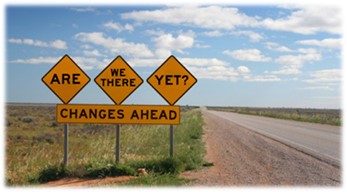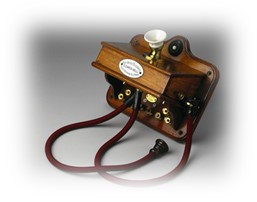During the week I came across the following quote which spoke to me:
The Church is not an institution devised and built at table, but a living reality. She lives along the course of time by transforming Herself, like any living being, yet Her nature remains the same. At Her heart is Christ. (Fr Romano Guardini 1885 – 1968)
I wonder how many of you are conscious of our ongoing need to be in transformation, of listening and paying attention to Christ through the Spirit? I imagine that many of you are aware of the beginnings of some changes that are taking place across the diocese, particularly at the level of the curia. The curia comprises the bodies which support those who serve the mission of the church in preaching, pastoral care, education, service to the community and charitable works. Most of those who work in serving these aspects of church life are located in the offices at Hamilton or, for CatholicCare, at Mayfield.
At the moment the curia consists of the following centralised administrative components:
- The Chancery
- The Catholic Schools Office
- CatholicCare Social Services Office
- St Nicholas Office
 Towards the end of May this year, Bishop Bill met with some of the senior leaders of the diocese in an attempt to bring together and discern steps that might be taken to address the changing cultural and legistlative frameworks we are facing as an organisation and as a people of God. For some time, Bishop Bill and the Diocesan Executive, as well as the Diocesan Pastoral Council, have been discussing our common identity, purpose and direction.
Towards the end of May this year, Bishop Bill met with some of the senior leaders of the diocese in an attempt to bring together and discern steps that might be taken to address the changing cultural and legistlative frameworks we are facing as an organisation and as a people of God. For some time, Bishop Bill and the Diocesan Executive, as well as the Diocesan Pastoral Council, have been discussing our common identity, purpose and direction.
What came to light, was the desire for greater unity and so the Project known as Many Parts. One Body. One Mission was conceived.
Bishop Bill wrote on 25 May, 2017
After consideration by senior leaders from across our organisation, we intend to take active steps in aiding the curia to serve the diocese better and to work better together by:
- Instituting a ‘Council for Mission’ for the whole diocese, which will review our overall direction as Church, establish priorities for the development of our ministries, agencies and services, and foster collaborative initiatives between agencies. The Council will meet regularly throughout the year, and I am making this a matter of priority to establish. I will keep you apprised of our progress.
- The Diocesan Executive will be expanded to include Directors of agencies to enhance information sharing and opportunities for joint planning and projects across the curia.
- Existing agency Boards and Councils will be charged primarily with exercising governance of the agency directly, through each Director, and providing periodic reports to the Diocesan Executive.
- Within the curia, bringing together resources and services that all areas of the curia may benefit from, which do not need to exist as separate units in each agency. This will enable agency leadership to focus on core business, reduce confusion across agencies and diminish duplication of staff and resources. This will also enable broader experience opportunities to staff in these areas.
The focus thus far has been seeking people who will head the new shared services (Centres of Excellence) arrangement in the diocese. So far we have engaged the following Heads of Service:
- Communications – John Kingsley-Jones
- Finance – Karen Stathis
- Human Resources – Sophie Smith
- ICT – Craig Stevenson
- Property and Facilities – Ray Bowen
There are three other areas that were already sharing services across the diocese:
- In House Counsel (Legal) – Nicola Arvidson
- Records – Juliet Hart
- Zimmerman Services – Sean Tynan

Last week these eight Heads met with the Diocesan Executive which includes:
- Bishop Bill
- Vicar General – Fr Brian Mascord
- Chancellor – Fr Matthew Muller
- Vice Chancellor Administration – Sean Scanlon
- Vice Chancellor Pastoral Ministries – Teresa Brierley
- Director of Schools – Michael Slattery
- Director CatholicCare Social Services – Gary Christensen
Initially our time was spent just getting to know each other, and then we moved into exploring Change Management. The theme of these Leadership Workshops was “You don’t build a business. You build your people and your people build your business.” Even though this is not church language, it is very true for us as we are about relationships. Much of what was covered was exploring what fruitful collaboration looks like. It is about doing things differently. This reminded me of the term that is presently being used around disruptive technology. This term was first coined by Harvard Business School professor, Clayton M Christensen in 1997 in his best-selling book, The Innovator’s Dilemma.
A disruptive technology is one that displaces an established technology and shakes up the industry, or a ground-breaking product that creates a completely new industry. Examples of these disruptive technologies are: the personal computer (PC), Windows operating system, email, mobile phones and then smartphones with all their associated applications, the laptop computer, cloud computing and social networking.
 It seems that these new technologies can be separated into two categories: sustaining and disruptive. Sustaining technology relies on incremental improvements to an already established technology. Disruptive technology lacks refinement, often has performance problems because it is new, appeals to a limited audience and may not yet have a proven practical application. Such was the case with Alexander Graham Bell's "electrical speech machine," which we now call the telephone.
It seems that these new technologies can be separated into two categories: sustaining and disruptive. Sustaining technology relies on incremental improvements to an already established technology. Disruptive technology lacks refinement, often has performance problems because it is new, appeals to a limited audience and may not yet have a proven practical application. Such was the case with Alexander Graham Bell's "electrical speech machine," which we now call the telephone.
This definition of disruptive technology seems to fit well with our diocese at the moment. As we discussed last week, what we are doing is an ‘emergent’ journey. The roadmap is not apparent and we are moving people from a present state, to a transition state and on to a future state. Like all transition states, there is discomfort because where we are  going to end up has yet to be determined and the journey in the wilderness can be disenchanting for some. As I sat with the other leaders I was reminded of the journeys of both Abraham and Moses. Both trusted in the voice of God and set out knowing that God would lead.
going to end up has yet to be determined and the journey in the wilderness can be disenchanting for some. As I sat with the other leaders I was reminded of the journeys of both Abraham and Moses. Both trusted in the voice of God and set out knowing that God would lead.
I don’t wish to give you the impression that we are going about this mindlessly but we know at this point we are being invited to re-imagine and re-create something new and possibly disruptive. What opportunities await us?
The reading from the book of Wisdom (6:12-16) says so much to us at this point in our diocesan journey:
Resplendent and unfading is wisdom,
and she is readily perceived by those who love her,
and found by those who seek her.
She hastens to make herself known in anticipation of their desire;
Whoever watches for her at dawn shall not be disappointed,
for he shall find her sitting by his gate.
For taking thought of wisdom is the perfection of prudence,
and whoever for her sake keeps vigil
shall quickly be free from care;
because she makes her own rounds, seeking those worthy of her,
and graciously appears to them in the ways,
and meets them with all solicitude.
I have written enough for this week’s message and I think the best place to leave you is contemplating the place and space of wisdom as we journey on the path to a future place or state. Let’s keep praying for wisdom and guidance and for those who have graciously stepped into these leadership roles in the diocese.